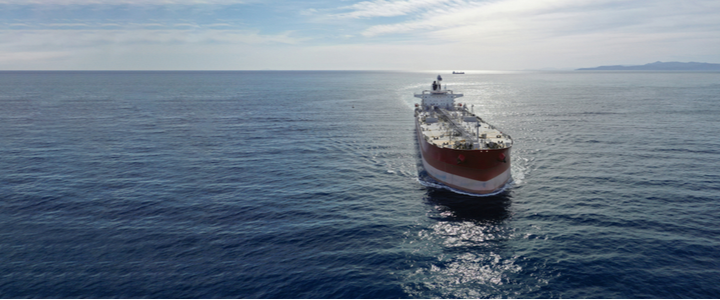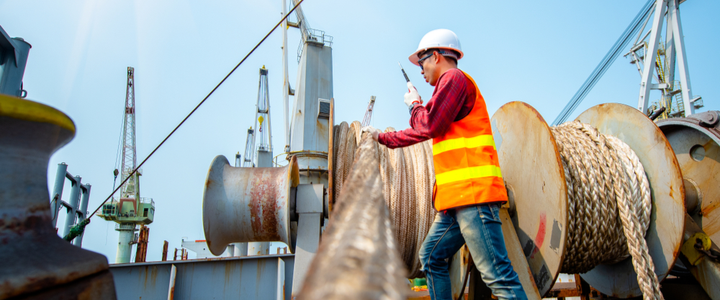The maritime sector is a high-risk industry that faces unique environmental, health, and safety challenges that employees deal with every day. In this article, you will learn about the different maritime standards and steps employers can take to ensure the safety of their workers.
OSHA Maritime Standards and Why They Matter
The Occupational Safety and Health Administration (OSHA) is a regulatory agency of the U.S. Department of Labor that ensures safe and healthy working conditions for the American workforce. Official guidelines establish minimum requirements for maritime operations in order to protect workers from hazards associated with shipboard employment.
OSHA maritime industry standards are official federal regulations that are relevant to the safety of those who work and travel on the sea. These standards are not just for sailors. They also provide safety information for anyone working on a boat or in a marine environment. This includes people who work onboard ships, at ports, and in other maritime settings.

Maritime Safety Tips From OSHA
American maritime safety is an important topic that needs to be addressed. These guidelines from OSHA are designed to help ship owners, operators, and crew members. They are intended to decrease the number of accidents on ships and ensure that they are safe for everyone on board.
The safety guidelines include information about how to prevent accidents by following the rules, identifying risks, implementing control measures, and responding in the event of an emergency. There are also tips for specific hazards like confined spaces, confined space entry procedures, working with dangerous cargo, and personal protective equipment.
OSHA Standard: General Working Conditions
OSHA’s standards for shipyard employment set out requirements for how maritime employers should provide workers with adequate working conditions. The General Working Conditions Standard covers topics such as:
Housekeeping
OSHA regulations are in place to protect the well-being of your employees. To fulfill OSHA standards, you need to make sure your workers have easy access to:
Additionally, employers should ensure that all walkways and working surfaces are clear of debris and eliminate slippery conditions.
Visit OSHA standard 1915.81 to learn more about general housekeeping requirements.
Working Alone
In the maritime industry, it’s common for employees to work alone for extended periods of time. Consequently, OSHA has several guidelines in place to help protect these individuals.
When a worker is working alone, they are more likely to have accidents if they don’t take precautions or follow safety procedures. For example, if a worker doesn’t wear eye protection, they may get chemicals in their eyes and not be able to see what they are doing. Likewise, if the worker doesn’t wear hearing protection, it may be difficult for them to hear warning sounds like an important alert or alarm.
OSHA highlights the following examples as instances of working alone:
- An employee working alone on a task at the far end of a shipyard or vessel
- An employee alone in a confined space or isolated location
- An employee alone in a tank, hold, or sonar space
- An employee performing hot work with the fire watch located on the opposite side of the bulkhead
- Two employees on opposite sides of a metal partition
Visit OSHA standard 1915.84 to learn more about the requirements for employees who work alone in shipyards.
Medical Services and First Aid
This standard means that employers must provide on-site medical care in the event of an injury or illness. They must also provide timely transportation to a hospital if necessary. Additional requirements include:
- Dry, sterile, weatherproof first aid supplies.
- Quick-drenching and flushing facilities
- On-site clinic or infirmary during each work shift or first aid provider available five minutes away
- CPR certified first aid provider
- Readily accessible basket stretchers or the equivalent
Visit OSHA standard 1915.87 to learn more about the requirements for medical services and first aid.

The Importance of Maritime Safety Consultants
Maritime safety consultants are professionals who work to ensure that the vessels or offshore structures meet the requirements stipulated by regulatory authorities like the International Maritime Organization, the American Bureau of Shipping, and OSHA. In addition, they carry out inspections, surveys, and assessments on behalf of clients to assess their compliance with these regulations.
The maritime safety consultant also works on prevention measures for accidents to reduce risk factors in projects such as installing emergency equipment, navigation systems, etc.
Maritime Basic Safety Training Courses & More from Safety by Design
To be fully compliant with federal U.S. marine laws, you may need a maritime safety consultant’s assistance. Safety By Design can help you get compliant so that you don’t run into problems in the future! Our third-party safety consulting company in Houston offers custom-designed training solutions and safety staffing for several industries. For over ten years, it has been our mission to help Texas businesses maintain a healthy workforce to keep operations running smoothly.
Call us today at (832) 290-7296 for more maritime safety information!
Tags: maritime safety, OSHA standards, safety consultant


